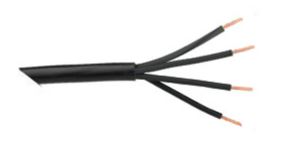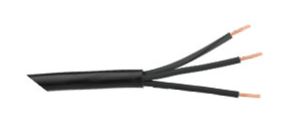What is the difference between 3-wire and 4-wire connection?
4-wire connection
Sentera -F and -H sensors require a supply voltage of 24 VDC. This type of sensors require a 4-wire connection. They can be connected with a 4-wire electrical cable: 2 wires for the supply voltage and 2 wires for the output signal. The ground connection of the supply voltage and the analogue output are galvanically isolated in -F type sensors. That is why they require a 4-wire connection.

4-wire connection reduces the risk of electrical interferences since the supply voltage and the output signal remain completely separated.
3-wire connection
Sentera -G sensors require a supply voltage of 24 VAC or 24 VDC. This type of sensors require a 3-wire connection. They can be connected with a 3-wire electrical cable. The ground connection of the supply voltage (V-) is internally connected with the ground of the analogue output (GND). It is called a 'common ground'. This means that only 3 wires are required to connect the supply voltage and the analogue output. Due to this 'common ground', -G and -F type sensors cannot be used together on the same network.

For this reason, -G and -F types cannot be used together on the same network. Never connect the common ground of -G type articles to other devices powered by a DC voltage. Doing so might cause permanent damage to the connected devices.
